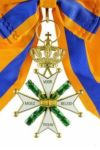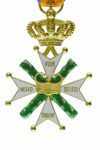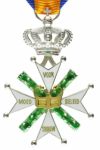Militaire Willems-Orde (MWO)
The Military Order of William (MWO), was instituted on April 30th 1815 by Royal Decree No. 5. Together with the Order of the Dutch Lion, the MWO is the oldest Order of Merit in the Netherlands. In precedence the MWO is the highest decoration of the Netherlands. By law, the Dutch head of state (Queen or King) is Grandmaster (Grootmeester) in the Order.
The MWO has four classes, each with their own version of the decoration; Grand Cross (Grootkruis), Commander (Commandeur), Knight 3rd Class (Ridder Derde Klasse) and Knight 4th Class (Ridder Vierde Klasse). Based on a recommendation, the "Kapittel der Militaire Willems-Orde" recommends the awarding of the MWO to the Defence Minister. Finally the MWO is awarded by Royal Decree of the Head of State personally and is awarded for excellent deeds for courage, merit or loyalty.
In 1815, the young Kingdom of the Netherlands was confronted with the French Army under Napoleon. King William I needed a high military decoration to be awarded for military deeds of courage in the forthcoming battles. In very short notice the MWO was instituted for this. The MWO could be awarded to all ranks, just like the French Legion d’Honneur.
Following the battles at Quatre Bas en Waterloo, the MWO was awarded for the first time. During this period the MWO was awarded over 1000 times. Since the Korean War the MWO was not awarded until in 2009 the 4th Grade was awarded to Captain Marco Kroon.
Although only meant for military, the MWO could from 1940 also be awarded to civilians for actions during military conflict. To be able to award the MWO in future, the rules will be adjusted to make it possible awarding the MWO for actions outside wartime situations. This makes it possible to award the MWO for peace-keeping activities etc..
According to the criteria, the MWO is meant to be awarded for those that have decorated themselves during battle in excellent deeds of courage, merit and loyalty.
The decoration can, besides military, also be awarded to civilians and military units. Normally the first awarding will be done in the lowest grade. Next awarding can lead to promotion to a higher grade.
The medal is basically formed by a white emailed cross, covered with the Royal Crown. The four arms of the cross are of the same length and widen to the end. The ends are split and have pearls on each point. The front and back of the cross bears the words "VOOR-MOED-BELEID-TROUW" on the arms. Between the arms of the cross one can find a green emailed "Bourgondisch" cross. The heart of both crosses is decorated with a golden "fire stroke" at the front and a bleu emailed medallion on the back with a "W" on it, surrounded with a Laurel wreath.
The ribbon is orange with two Nassau-bleu bands on each side.
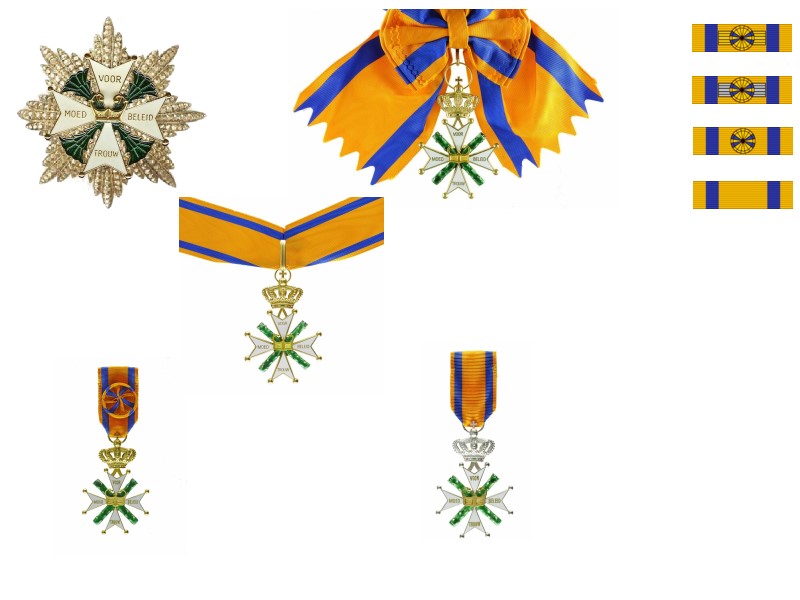
| Name | Date of birth | Date of death | Awards | |
|---|---|---|---|---|
| Spier, Tivadar Emile | 17-11-1916 | 17-06-2010 |       more more |
Subonderscheidingen
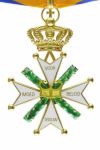
In the database: 2
Issued:154
Sources
- - MAALDERINK P.G.H., De Militaire Willemsorde sedert 1940, Sijthof Pers, 1982.
- MEIJER, H.G. & VIS, R., Het Vliegerkruis, De Bataafsche Leeuw, Amsterdam, 1997.
- Dorling H.T., Ribbons and Medals, Philip, London 1974
- Koninklijke Onderscheidingen
